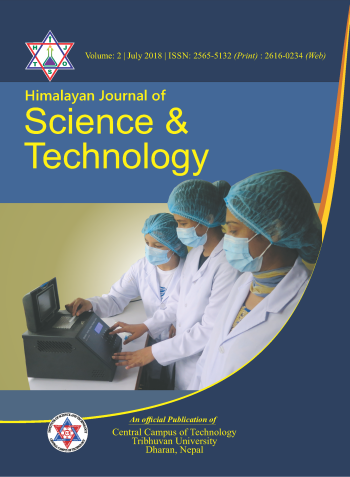Amaranth: A Golden Crop for Future
DOI:
https://doi.org/10.3126/hijost.v2i0.25854Keywords:
Amaranth, nutritional values, anti-nutritional factors, toxic aspectsAbstract
Amaranth (Amaranthus), a member of amaranthaceous group of plants, is classified as a pseudo cereal and grown either as a grain crop or as a leafy vegetable. It is one of the few multi-purpose crops which can supply grains and tasty leafy vegetables. The grain has ability to grow in the dry and semi-dry lands due to its drought tolerant characteristics. It is rich in protein, lysine, carotenoids, dietary fiber, iron, vitamin C, vitamin A, riboflavin, thiamin, folic acid, calcium etc. Amaranth contain substantial amount of bioactive components such as tocopherol (α, β and γ), DPPH (2, 2-diphenyl-1-picrylhydrazyl), anthocyanins, lutein and other phenolic compounds. The fat in amaranth seed is low but composed of essential fatty acids (linoleic and linolenic). Grain amaranth can be used as a flour ingredient for pancakes, bread, muffins, dumplings, crackers, cookies, puddings, porridge, cakes and as a roasted puffed snack. Vegetable types amaranth (also leaves of grain amaranth) are used to make curry, vegetable salads, steamed salad, boiled soups, stir fried, or baked to taste. The seeds and leaves of amaranth are used as herbal remedies and have nutraceutical value. Because of no gluten content, grain amaranth is valuable carbohydrate source for person having glutin intolerance problem. Seed or leaf of amaranths contains some antinutritional factors, such as saponins, tannins, phytic acid, oxalates, protease inhibitors, nitrates and phytohemagglutinins. Thermal processing in moist environment, prior to food use inactivates the antinutritional factors. The present paper briefly describes crop introduction, botany, chemical and nutritive composition, functional and bioactive components, antinutritional factors and food uses including new findings on functional properties of grain amaranth.
Downloads
Downloads
Published
How to Cite
Issue
Section
License
© Himalayan Journal of Science and Technology
All rights reserved.




